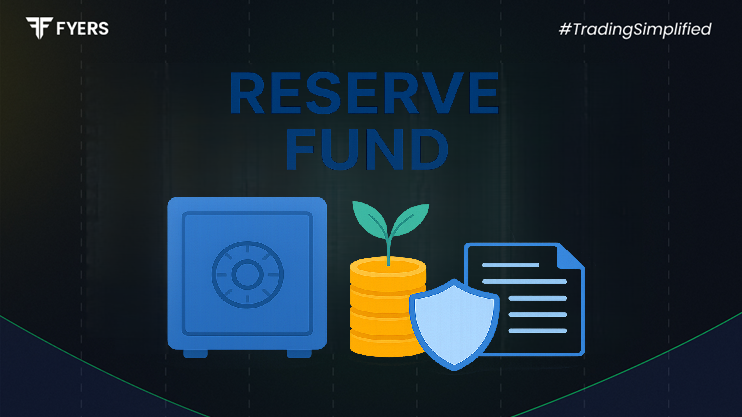

 19 Sep, 2025
19 Sep, 2025
 3 mins read
3 mins read

Financial planning—whether for individuals, businesses, or institutions—requires a safety cushion to handle unexpected expenses or downturns. This is where a reserve fund comes in. Acting as a financial buffer, it ensures stability and continuity even during uncertain times.
This article explains what a reserve fund is, how it is treated in accounting, provides examples, explores its importance, investment options, and the best ways to maintain a healthy reserve fund balance.
A reserve fund is money set aside for emergencies, unforeseen costs, or future obligations. It is not meant for day-to-day spending but rather to provide financial security when unexpected needs arise.
In simple terms, it acts like a financial safety net that ensures an organisation, household, or fund can continue operations without disruption.
In accounting, a reserve fund is recorded as part of an organisation’s reserves and surplus. Businesses use it to cover unexpected losses, equipment replacement, or expansion needs.
It appears on the liabilities side of the balance sheet under reserves and surplus.
Companies often earmark these funds for specific purposes like debt repayment, legal settlements, or asset purchases.
Thus, a reserve fund in accounting reflects prudent financial management, safeguarding the business against risks.
Here are some reserve fund examples:
Household: An emergency savings account to cover medical expenses or job loss.
Corporates: A contingency reserve for sudden market downturns or equipment failures.
Housing Societies: A fund to finance repairs, renovations, or major maintenance projects.
Governments: Sovereign wealth or contingency reserves to handle economic crises.
Each of these demonstrates how reserve funds protect financial stability.
A reserve fund is important for several reasons:
Financial Security – It ensures continuity during emergencies without relying on high-interest loans.
Operational Stability – For businesses, it prevents disruptions when unexpected costs arise.
Risk Management – Acts as a safeguard against market volatility or unforeseen liabilities.
Long-Term Planning – Provides funds for strategic growth and future projects.
In short, it builds resilience and supports sustainable financial management.
A reserve fund investment should balance safety, liquidity, and returns. Common options include:
Fixed Deposits (FDs) – Low risk, steady returns, and high liquidity.
Liquid Mutual Funds – Suitable for short-term needs with better returns than savings accounts.
Government Bonds – Safe but less liquid, ideal for long-term reserves.
Savings Accounts – Simple and accessible, though with minimal returns.
Choosing the right mix depends on whether the reserve is meant for immediate or future use.
Maintaining an adequate reserve fund balance requires discipline:
Set a Target Amount – For individuals, this could be 3–6 months of expenses. For businesses, it depends on operational risks.
Contribute Regularly – Automate deposits to steadily grow the fund.
Separate the Fund – Keep it distinct from day-to-day accounts to avoid misuse.
Review Periodically – Adjust contributions as expenses and risks change.
Consistency is key to ensuring the fund remains reliable when needed.
Provides financial security and risk coverage.
Improves creditworthiness for businesses.
Encourages disciplined saving and planning.
Idle funds may generate low returns.
Over-reliance may reduce focus on revenue generation.
Requires regular monitoring and discipline to maintain balance.
A reserve fund is more than just money set aside—it is a cornerstone of financial resilience. Whether for individuals, businesses, or communities, it ensures security during emergencies and supports long-term planning.
By making prudent reserve fund investments and maintaining a healthy balance, you can safeguard against uncertainties and build a strong foundation for future growth.
It is money set aside as a safety net for emergencies or unexpected expenses.
A household emergency savings account, a corporate contingency reserve, or a housing society repair fund.
It is recorded under reserves and surplus on the liabilities side of the balance sheet.
In safe and liquid instruments such as fixed deposits, liquid funds, or savings accounts, depending on your needs.
Calculate your Net P&L after deducting all the charges like Tax, Brokerage, etc.
Find your required margin.
Calculate the average price you paid for a stock and determine your total cost.
Estimate your investment growth. Calculate potential returns on one-time investments.
Forecast your investment returns. Understand potential growth with regular contributions.